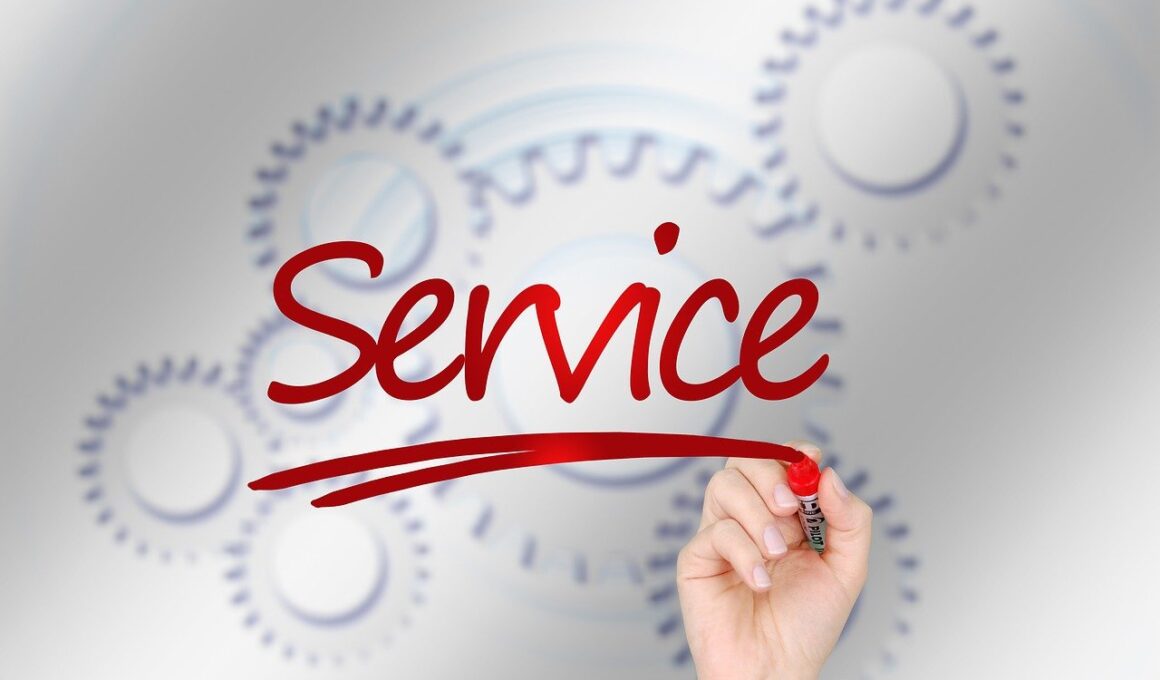Retargeting Strategies: Keeping Customers Engaged
In the realm of product marketing, retention marketing stands out as a powerful tool for increasing customer loyalty and engagement. The essence of retention marketing is to remind customers of the value they derive from your product. Using retargeting strategies effectively maximizes the chances that former customers will return. One effective method is utilizing personalized ads that speak directly to previous purchasers. These advertisements can highlight new features or products that align with their preferences, ultimately driving interest back to your brand. Furthermore, leveraging customer data to segment an audience enables businesses to deliver tailored messages, therefore increasing the likelihood of re-engagement. Emphasizing strong visuals and clear calls-to-action in these ads can also enhance their effectiveness. Overall, implementing strategic retargeting efforts can lead to higher conversion rates and longer-lasting customer relationships. With a blend of creativity and data-driven insights, businesses can put together campaigns that re-invigorate interest and enhance overall customer satisfaction.
The success of retargeting strategies depends significantly on understanding your audience’s behavior. Monitoring metrics such as bounce rates, session duration, and purchase history enables you to tailor messaging that resonates with specific customer segments. Also, consider the timing of your retargeting ads. Observing when your audience is most active can help in effectively scheduling ad rolls to capture their attention. Tools and platforms provide insights into optimal advertisement placements and times, allowing marketers to prioritize where and when to connect. Moreover, conducting A/B testing can unveil what content performs best, be it discounts or product recommendations. Testing different ad creatives helps marketers refine their strategies and make real-time adjustments based on feedback. It’s critical to not overwhelm your customers with too many ads, which can lead to frustration. Instead, adopting a balanced approach ensures a memorable experience accompanied by meaningful engagement. Over time, this will translate to stronger customer loyalty and retention while establishing your brand as an attractive choice.
Utilizing Email Campaigns
Email remains one of the most effective channels for retargeting previous customers. By crafting personalized email campaigns that address individual preferences, businesses can remind customers about their abandoned carts or suggest products based on past purchases. Creating dynamic content tailored to customer behavior increases the relevancy of emails. Including enticing visuals, personalized subject lines, and evident calls-to-action can greatly enhance open and click-through rates. Tracking email campaign performance through various analytics can help identify which approaches yield the best results, enabling marketers to refine their methods over time. Moreover, incorporating a referral program into email campaigns can stimulate word-of-mouth marketing; this strategy not only engages previous customers but encourages them to share your product with friends. Providing incentives for referrals, such as discounts or exclusive access, fosters goodwill and motivates engagement. Ultimately, effective email retargeting campaigns create an ongoing dialogue with your customers that builds trust and nurtures loyalty, leading to continued business.
Social Media platforms also play a crucial role in retargeting strategies, notably through paid advertisements that can target previous website visitors. Using pixel tracking, businesses can re-engage these visitors by showing them tailored ads that are relevant to their previous interests. Additionally, leveraging multiple platforms ensures that your messaging reaches a broader audience, increasing your chances of conversion. Running retargeting ads across Facebook, Instagram, and Twitter effectively keeps your brand front of mind. Also, creative posts that engage your audience directly through polls, contests, or user-generated content can enrich customer interaction. Promote interaction by encouraging customers to share their experiences with your products, effectively turning them into brand advocates. Emphasizing a strong community presence can facilitate ongoing engagement and foster loyalty. Moreover, crafting posts that highlight customer testimonials or feedback can build credibility and encourage potential customers to re-engage. Engaging further through live events or Q&A sessions allows for direct communication, strengthening relationships between brands and customers.
Utilizing Content Marketing
Content marketing can act as a powerful retargeting strategy, allowing brands to engage with previous customers through informative and entertaining content. Creating articles, blogs, or videos that address common customer questions can reinforce your brand’s expertise and enhance customer loyalty. Sharing this content through existing channels keeps your product at the forefront of customers’ minds and establishes credibility. Additionally, distributing valuable content through newsletters can invite previous customers to revisit your brand, providing them with relevant information tailored to their interests. Leveraging SEO-driven topics ensures that the content reaches a broader audience, capturing the attention of potential returning customers. Establishing a regular posting schedule fosters consistency in engagement, showcasing your brand’s commitment to providing quality information. Furthermore, collaborating with influencers or industry experts in your content strategy can enhance visibility and credibility. Engaging through webinars or live discussions can provide interactive opportunities for previous customers to participate, which further consolidates their connection to the brand.
Incorporating loyalty programs can serve as a valuable retargeting strategy, reinforcing brand allegiance while encouraging repeat purchases. Tailoring rewards based on customer behavior ensures that promotions resonate with individual preferences. Offering exclusive discounts, early access to launches or unique experiences can motivate customers to remain engaged with your brand. Regular reminders or updates on loyalty status through emails or notifications maintain awareness and drive participation. Additionally, gamifying the loyalty experience can add an element of fun and excitement. Providing tiered rewards creates opportunities for customers to level up their benefits, encouraging continued loyalty. Throughout all strategies, effectively communicating the advantages of the loyalty program is essential. Highlighting points accrued towards rewards fosters excitement about the benefits available. Furthermore, utilizing social media to share success stories or testimonials can boost interest and demonstrate the value of the program. By maintaining an ongoing dialogue with customers about their rewards, brands can build lasting relationships that ultimately enhance retention.
Analyzing Retargeting Effectiveness
Evaluating the performance of retargeting strategies is fundamental for continued success. Implementing various metrics such as conversion rates, click-through rates, and engagement levels helps marketers assess their strategies’ effectiveness. Regularly analyzing these metrics allows for informed decision-making regarding which strategies to refine or enhance. Moreover, utilizing heatmaps or tracking tools can give insight into how customers interact with ads or emails. This information can maximize the effectiveness of future campaigns and ensure that retargeting continues to engage customers meaningfully. Customer feedback through surveys can also provide qualitative insights into how they perceive retargeting campaigns. Engaging with customers post-campaign allows for adjustments and refinements based on their responses. Staying up-to-date with industry trends ensures that your strategies remain relevant, allowing for flexibility and adaptability when necessary. Ultimately, continued analysis creates a learning cycle that supercharges future marketing efforts by building richer engagement with customers while boosting retention.
In conclusion, retargeting strategies are essential for maintaining customer engagement in product marketing. By utilizing a structured mix of techniques informed by data, personalized messaging, and community building, brands can significantly enhance their retention marketing efforts. Understanding the fundamental principles of customer behavior, utilizing various marketing platforms, and constantly analyzing performance can create a cycle of continuous improvement. Moreover, integrating strategies that focus on content marketing and loyalty program engagement empowers brands to build genuine connections that translate to lasting loyalty. As the landscape of marketing continues to evolve, adapting to changes and new technologies will only increase the effectiveness of these strategies. Retargeting done right ensures that customers feel valued and appreciated, thereby promoting a higher lifetime value with the brand. Successful engagement can lead to repeat purchases and word-of-mouth referrals, further amplifying customer reach. It is vital for businesses to emphasize creativity alongside strategy and insights as they develop retention marketing efforts. Consistently innovating to meet the changing desires of customers is paramount in a competitive marketplace.


